Best PHP Frameworks in 2025
By Alex Carter on October 28, 2024
PHP frameworks provide a structured approach to web development with reusable components, built-in features, and modular designs, boosting productivity and scalability. They simplify coding, enhance security, and support maintainable applications. Choosing the right framework depends on project complexity, performance needs, developer skills, community support, and maintenance requirements.
For projects where efficiency and reliability are critical, incorporating PHP performance monitoring can help ensure the chosen framework meets performance expectations and maintains optimal functionality over time.
What is a PHP Framework?
A PHP framework is a structured platform for developing web applications with the PHP programming language. It includes key tools, reusable components, and a modular design that improves development productivity. According to Google Trends, PHP has risen in popularity over the last five years, surpassing other languages like JavaScript.
Why Every Developer Should Consider Using a PHP Framework
PHP frameworks simplify web development by providing pre-built components that speed up the process and boost productivity. They also assist in cutting development expenses. Built-in functionality and ready-to-use pieces minimize the need to start from scratch, saving time and money.
Furthermore, PHP frameworks provide scalability and maintainability. These frameworks enable applications to handle increasing traffic and adapt to future requirements by adhering to recognized best practices and design principles.
What to Consider When Picking a PHP Framework
Project Requirements and Scope
Evaluate your project’s size, complexity, and specific needs. Lightweight frameworks suit small apps needing quick development and easy maintenance, while larger projects require scalable frameworks with advanced features. Identify goals like CMS, e-commerce, or RESTful API integration to choose the right framework.
Learning Curve and Developer Experience
Consider your development team’s experience with different PHP frameworks. Selecting a familiar framework can simplify development and reduce onboarding time. However, exploring new frameworks may offer improved features and better development practices. Weigh the advantages of sticking with known tools against the potential benefits of learning a new one, considering the long-term impact on your project.
Community Support and Documentation
Strong community support and clear documentation are essential. Frameworks with active communities and extensive resources facilitate debugging and keep developers working. Well-documented frameworks shorten the learning curve while providing useful examples and best practices. Also, make sure the framework’s structure and coding style are compatible with your team’s expertise.
Performance and Scalability
Prioritize frameworks that enhance performance and support scalability. Efficient database handling, caching options, and optimized code execution directly affect user experience and application speed. Choose a framework that can manage your current needs while allowing for future growth without major changes.
Maintenance and Long-Term Support
Choose a framework that provides regular updates, active maintenance, and continuing support. Regular updates assist in resolving security flaws, issues, and adapting to new technology. A well-maintained framework keeps your online application reliable, safe, and up-to-date over time.
Top 10 PHP Frameworks in 2025
Laravel
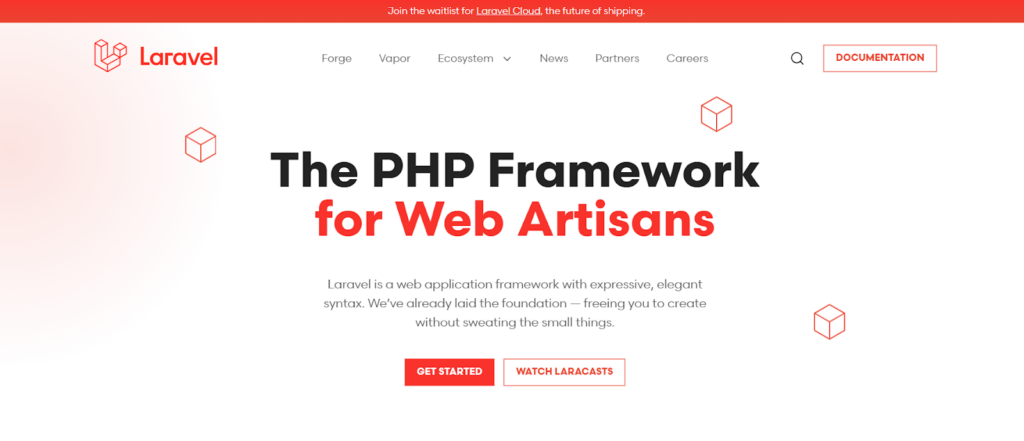
Laravel, which debuted in 2011, is a free, open-source PHP framework used for developing configurable online applications. It is well-known for its safe handling of complicated applications and works with large firms such as Pfizer, Tour Radar, and the BBC. Laravel makes PHP programming easier by simplifying sessions, queues, routing, caching, and authentication. With over 20 built-in libraries, it accelerates web development and automates operations that were previously laborious.
Key Features:
- Scalable and secure;
- Includes functionality packages and email integration;
- Strong community support;
- Supports MVC architecture.
Challenges:
- Difficult for beginners to learn;
- Heavy reliance on third-party tools for advanced features.
Symfony
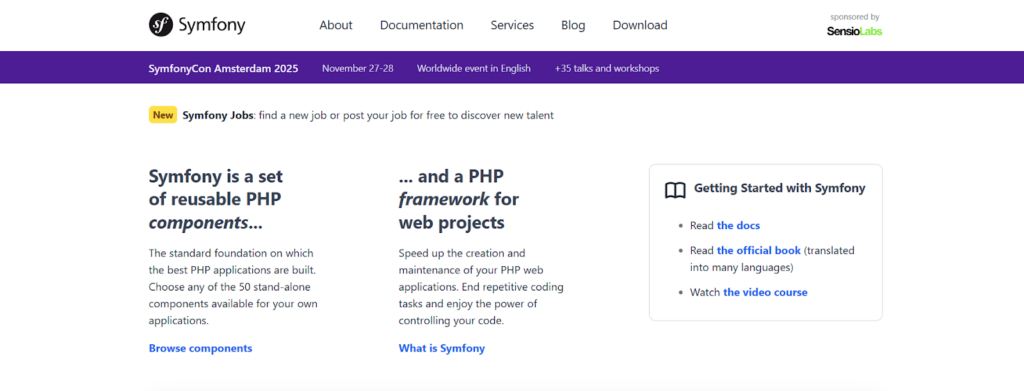
Released in 2005, Symfony is a modular PHP framework designed for large-scale corporate applications. It offers easy setup and quick deployment, making it a preferred choice for developers. Projects like Drupal 8, eZ Publish, and Open Sky use Symfony due to its flexibility and wide library of components. Its ability to integrate with external libraries makes it ideal for building feature-rich applications.
Key Features:
- Supports API and microservice development;
- Minimizes repetitive coding;
- Works with multiple database engines (MySQL, PostgreSQL, etc.);
- Utilizes Doctrine ORM for database operations.
Challenges:
- High resource consumption for small projects;
- Requires advanced knowledge for effective use.
Laminas (Formerly Zend)
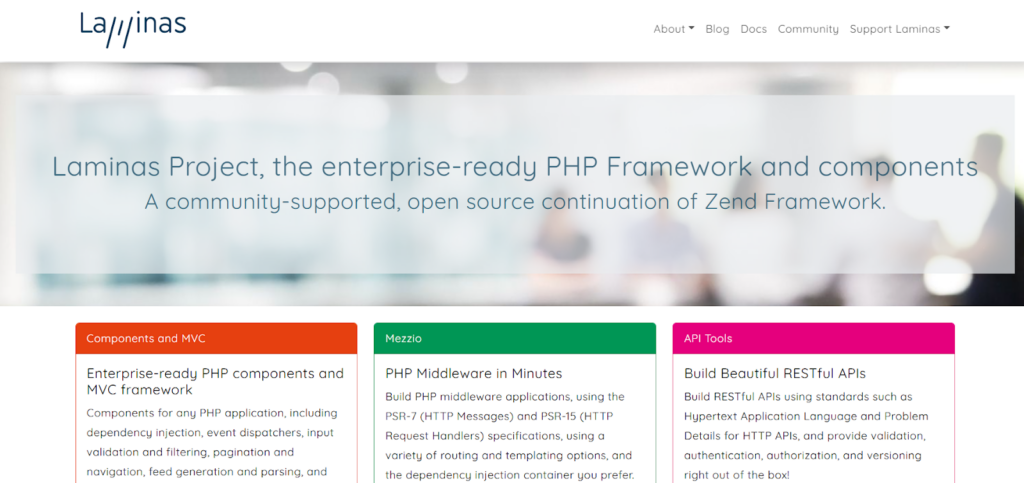
Laminas, which debuted in 2006, is an open-source, object-oriented PHP framework aimed at producing high-quality, business-oriented applications. It emphasizes security, speed, and performance and can integrate with external libraries. Major companies like IBM, Google, and Microsoft use Laminas. The framework is divided into three components: MVC, Mezzio, and API tools.
Key Features:
- Manages sessions, cloud APIs, and encryption;
- Built-in drag-and-drop editor and debugging tools;
- Highly customizable with inheritance and interfaces;
- Prioritizes security and performance.
Challenges:
- Slower compared to lightweight frameworks;
- Complex for beginners.
CodeIgniter
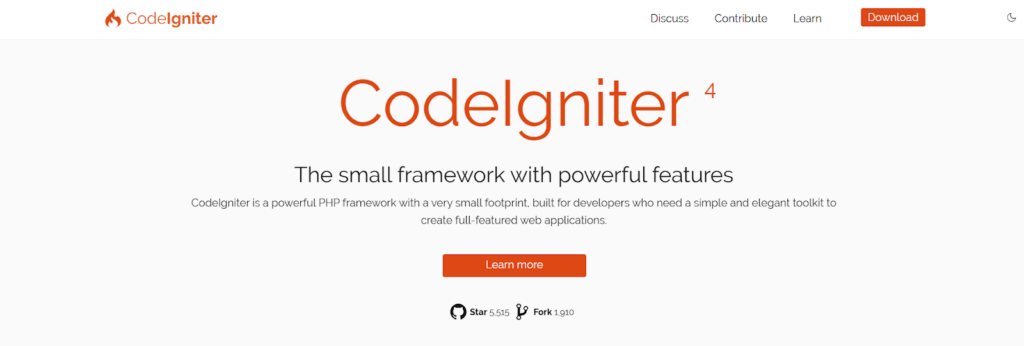
CodeIgniter, which was released in 2006, is a lightweight PHP framework noted for its small footprint (2MB, including documentation) and high speed. It is suitable for constructing dynamic webpages and has built-in error handling. Its prebuilt modules simplify the development of reusable components, making it popular with companies like Udemy, Adobe, and Medical Guardian.
Key Features:
- Simple encryption and extendable components;
- Streamlines CRUD operations without raw SQL;
- Fast page load times;
- Minimal setup required.
Challenges:
- No built-in ORM support;
- Limited scalability for large projects.
CakePHP
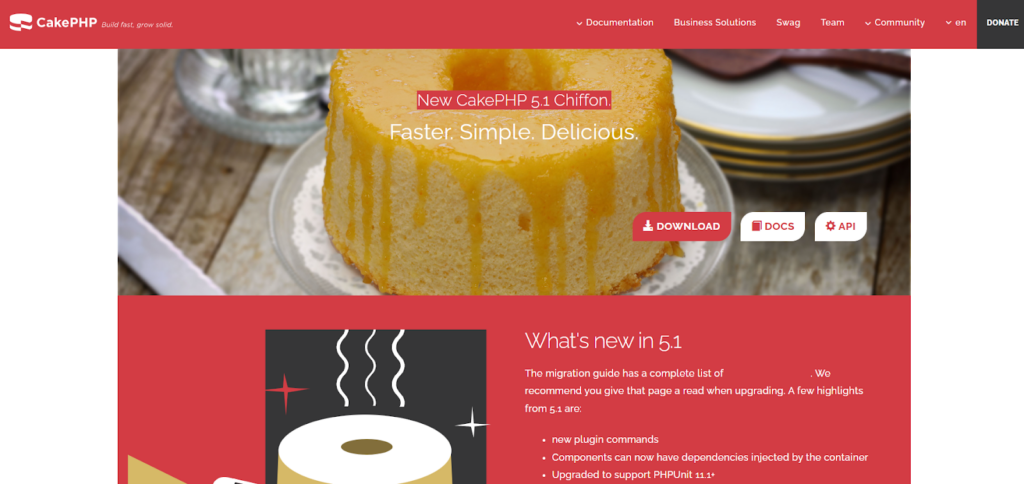
Since its release in 2005, CakePHP has been known for its simplicity and speed in developing commercial applications. It follows MVC architecture and uses a convention-over-configuration approach to guide developers. The framework makes CRUD operations straightforward and includes a built-in ORM. The updated 4.0 version introduced a skeleton design and APIs for rapid app development. Companies like Hyundai, MBW, and Express have used CakePHP.
Key Features:
- Built-in protection against SQL injection and CSRF attacks;
- Follows MVC architecture;
- Includes a built-in ORM;
- Scalable and secure.
Challenges:
- Less flexible than newer frameworks;
- May struggle with high-traffic applications.
Yii
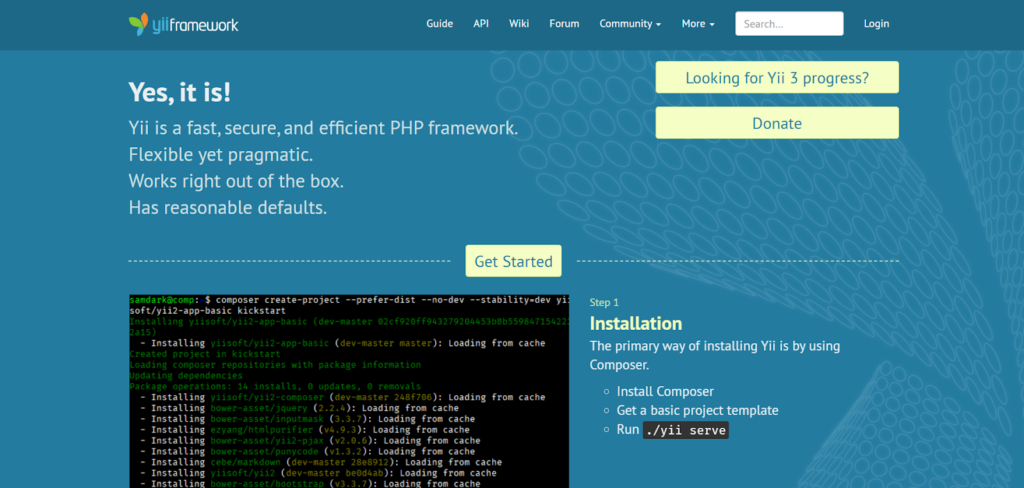
Launched in 2008, Yii – which translates to “Yes, it is” in Chinese—is a fast, efficient PHP framework designed for building modern web applications. It emphasizes strong performance and follows strict object-oriented programming principles, along with the DRY (Don’t Repeat Yourself) concept, making it a great choice for large-scale projects. Yii also features Gii, a robust code generator that streamlines development. Its reliability has attracted major companies like Deloitte and General Electric.
Key Features:
- Integration with AJAX and jQuery;
- Layered caching and encryption;
- Supports unit and functionality testing;
- Extensible and efficient.
Challenges:
- Complex for beginners;
- Less common for small projects.
Phalcon
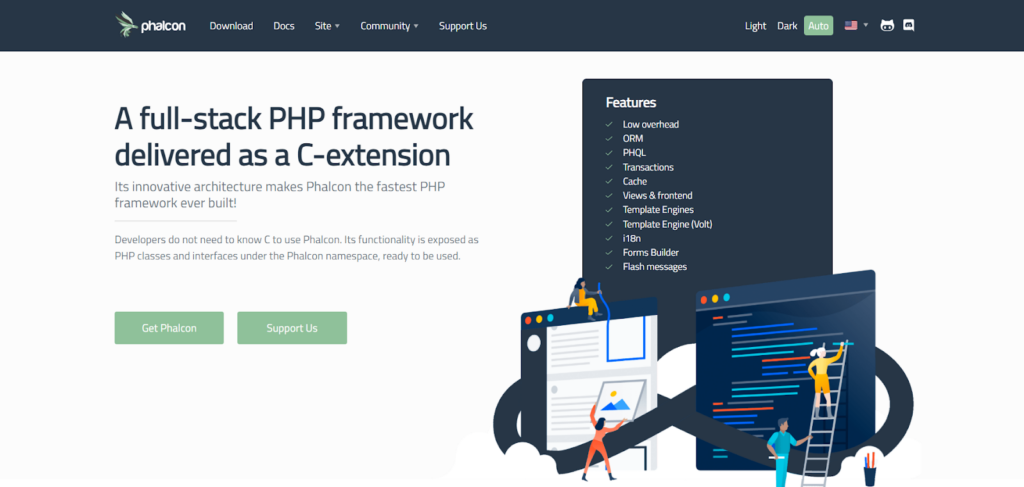
Phalcon, released in 2012, is a full-stack PHP framework designed for speed and flexibility. Written in C and delivered as a C-extension, it offers high performance while maintaining the benefits of PHP. It includes features like asset management, universal autoloader, and caching. Companies like Urban Sports Club, Proshore, and Edureka use Phalcon for web development.
Key Features:
- Uses MVC architecture and code compilation;
- Supports MySQL, PostgreSQL, and SQLite;
- Includes VOLT templating engine and query language;
- Ensures data integrity with transactions.
Challenges:
- Requires C knowledge for advanced customization;
- Documentation can be inconsistent.
FuelPHP
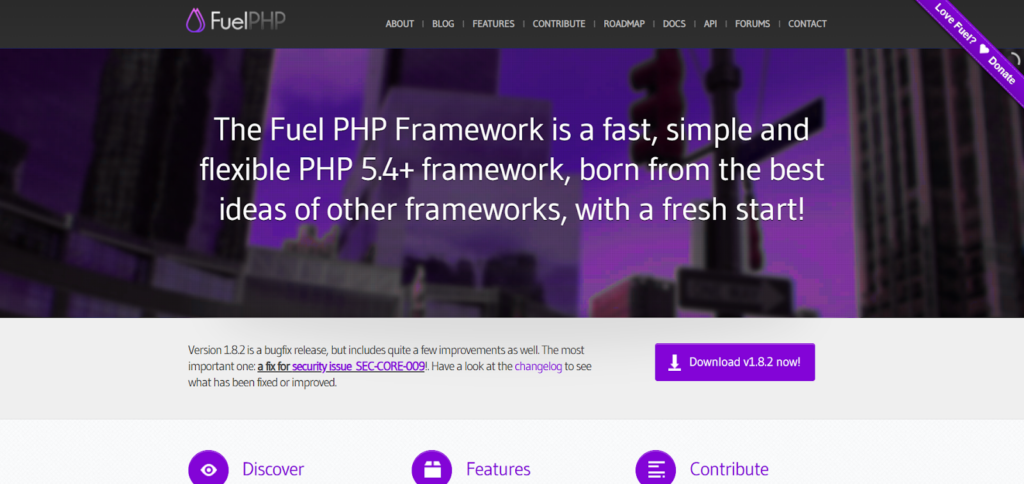
FuelPHP, launched in 2011, is a flexible, full-featured PHP framework that uses HMVC (Hierarchical Model-View-Controller) architecture. This reduces redundancy, saves memory, and simplifies development. Known for its strong security measures, it is ideal for projects where security is a priority. Companies like Spookies, InventoryBase, and Amitum use FuelPHP.
Key Features:
- RESTful implementation and URL routing;
- Strong security with CSRF and XSS protection;
- Command-line utilities for developers;
- Lightweight and extensible.
Challenges:
- Smaller community compared to leading frameworks;
- Slower adoption of new PHP features.
PHPixie
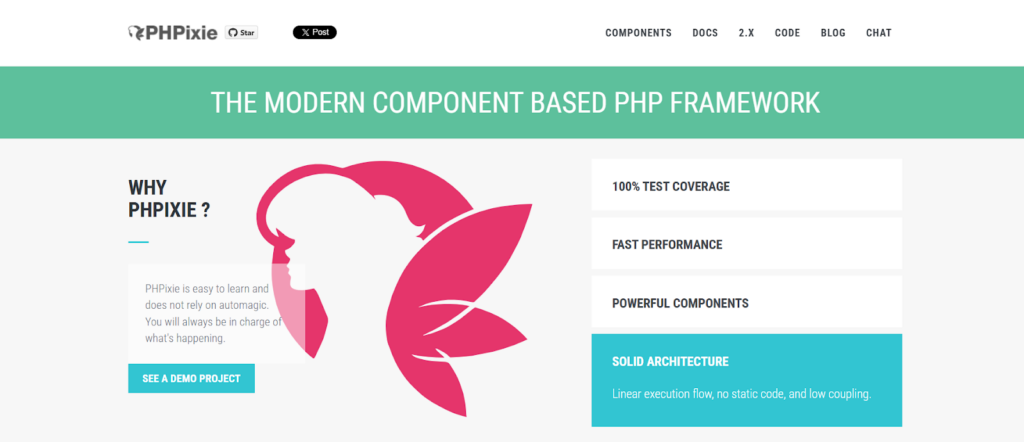
PHPixie is a lightweight PHP framework built on the HMVC architecture that is primarily intended for developing online applications, particularly read-only webpages. It employs a bundle structure to facilitate code reuse and sharing between projects. The framework is made up of separate, unit-tested components including authentication, HTTP processing, ORM (Object-Relational Mapping), and validation. These components may be used both inside PHPixie and individually, enabling flexibility.
Key Features:
- Lightweight with fast performance;
- Smooth integration with Object-Relational Mapping (ORM);
- Built-in security features;
- User-friendly and easy to navigate;
- Tools for performance optimization.
Challenges:
- Smaller ecosystem of resources;
- Limited community support;
- Less frequent updates.
Slim
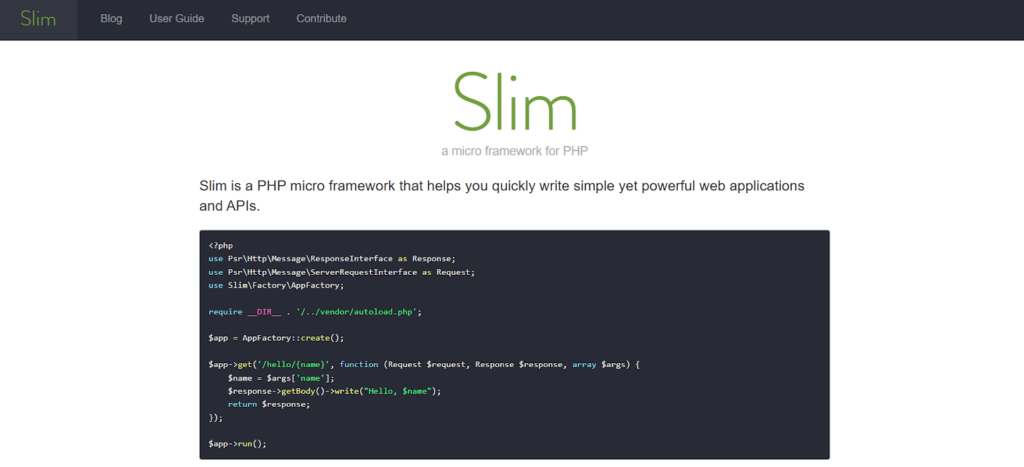
Slim, a micro-framework for processing HTTP requests and answers, was published in 2010. Slim, known for its ease of use and speed, is frequently used to create RESTful APIs and services. The current version (4.10) features PSR-7 changes as well as other interface improvements. Slim is used by companies such as WebbyLab, PathMotion, and HHEY to build lightweight online apps.
Key Features:
- Simple and easy to use;
- Dependency injection and error handling;
- No third-party dependencies;
- Designed for handling HTTP requests and responses.
Challenges:
- Limited built-in features;
- Not suitable for large-scale applications.
Conclusion
Selecting the appropriate PHP framework is crucial for creating secure, scalable, and high-performing web applications. Each framework comes with its own set of features, architectural styles, and flexibility levels, so it’s important to match it with your project’s specific requirements. Key factors such as performance, community support, scalability, and long-term maintenance should influence your choice. Whether developing a basic website or a complex enterprise application, the right framework can streamline workflows, boost efficiency, and contribute to long-term project success.
Posted in blog, Web Applications
Alex Carter
Alex Carter is a cybersecurity enthusiast and tech writer with a passion for online privacy, website performance, and digital security. With years of experience in web monitoring and threat prevention, Alex simplifies complex topics to help businesses and developers safeguard their online presence. When not exploring the latest in cybersecurity, Alex enjoys testing new tech tools and sharing insights on best practices for a secure web.
